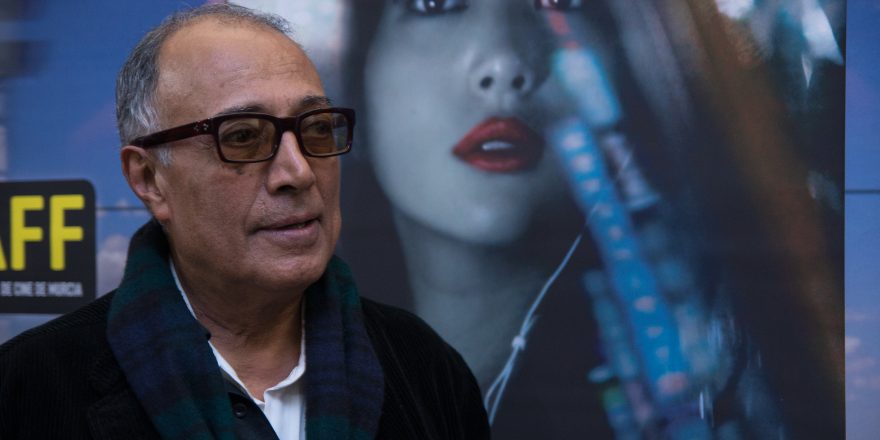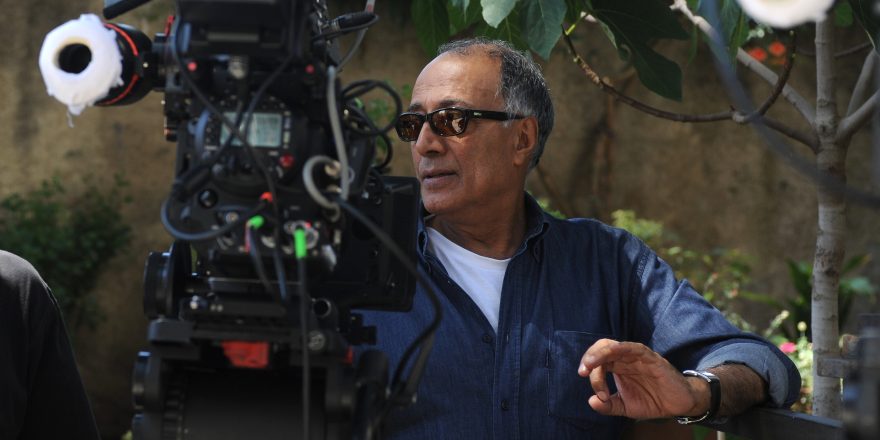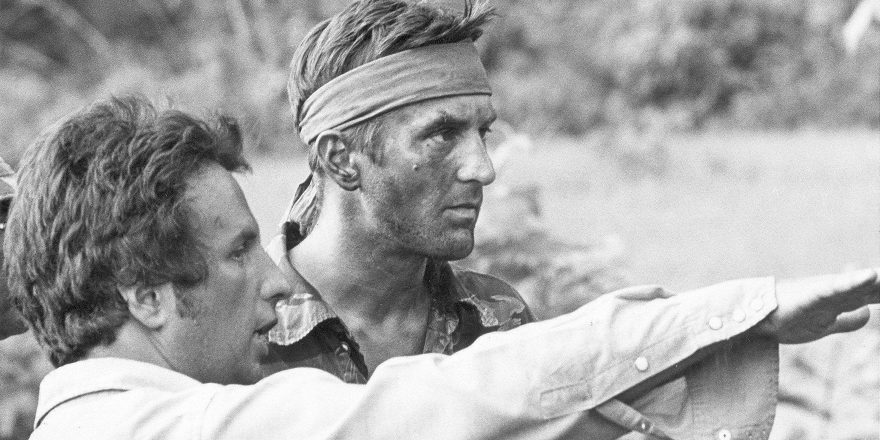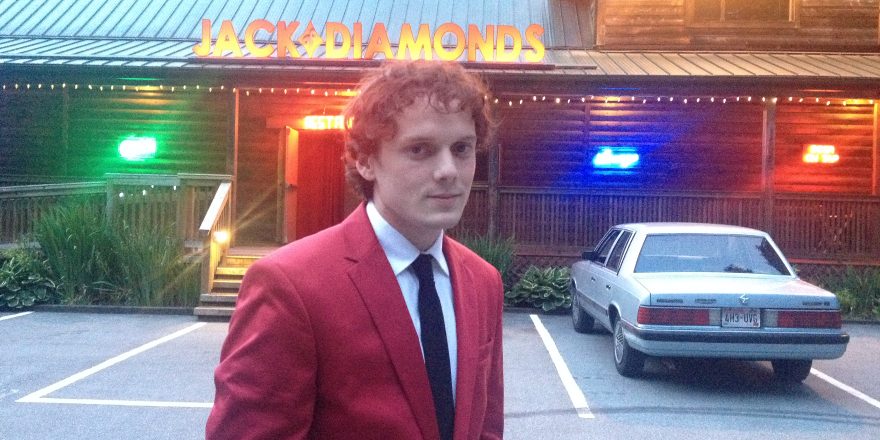Abbas Kiarostami, the great Iranian director of such films as Close-up, Taste of Cherry and Certified Copy, was an incredibly meaningful and beloved figure among filmmakers, and his passing on July 4 prompted a huge response from his peers and contemporaries. Below a selection of Talkhouse Film contributors explain Kiarostami’s significance to them.
More remembrances of Kiarostami will be added as they come in, so keep checking back. And add your own thoughts on the man and his work in the comments section below.
Alex Winter
The cinema that emerged from post-revolutionary Iran was an eruption of vitality and brilliance. One great film seemed to follow another for years on end, and I ate them all up, knowing it could never last. In the West, Kiarostami became the most well-known of the filmmakers from this period, though there were many artists who produced singular movies in Iran’s golden age.
Kiarostami’s films play on all the senses, bending and breaking the rules of classical structure, rationalism and thematic didacticism, but always deeply human. He is often called a poet of cinema, which is true from the standpoint that he was a poet who made movies. But the label is a little stuffy and somehow diminishing of his gifts. I think of Kiarostami more as a sly magician, a high-wire artist whose outwardly effortless storytelling masked a rigorous mastery of technique. He exists in that very small and specific circle of directors who mastered the art of creating transcendent films; including Carl Dreyer, Robert Bresson, Satyajit Ray, Luis Buñuel and Andrei Tarkovsky. Of course transcendence isn’t a prerequisite for a great movie, and these types of films are not to everyone’s taste. They happen to be my very favorite, and Kiarostami was the last in this lineage. It will be interesting to see who picks up the mantle, and from where. No one saw them coming from Iran.
Robert Greene
Without Kiarostami, I wouldn’t know how to find forms for the cinematic questions that most exhilarate me. He created pathways. He’s on my Mount Rushmore, with Wiseman, Akerman, Peter Watkins and Fassbinder. His movies were like gurus I’d come to have private consultations with. For me, he understood the material and mystical aspects of cinema better than anyone; his halls of mirrors somehow created new reflections. I’d get lost while thinking in them. He was getting old and had been sick, this was not really a surprise or even a tragedy, but when the news came in I just sat still and quietly cried. I thought about what it must look like to my children to see their father crying over a man he’d never met. I could almost picture myself from across the room. Somehow his movies had prepared me to feel and think and imagine my way through the moment.
Stephen Cone
I call my year in New York City – September 2002 through September 2003 – my year in limbo. I was 22. I was torn between professions and mediums. I was lost, lonely, the opposite of empowered. I wasn’t making the most of the city, but I was making the most of my Tower Records video membership. I had read Rosenbaum on Kiarostami, but didn’t begin exploring his work until my roommate at the time, Arian Moayed (now a hugely accomplished, Tony-nominated actor of stage and screen), urged me to watch Taste of Cherry as soon as possible. A genuinely startling experience. I need to watch it again. And then Close-Up, which ended up being one of my 10 or 15 favorite films of all time (it remains so). It changed my life (everyone says that). And then The Wind Will Carry Us. Searching for the phone signal, I think about it all the time, cosmic yearning made movingly funny. And on and on. One of the first things I did when I moved home to figure out what city I actually wanted to live in was check out a VHS copy of Through the Olive Trees from the Charleston Library.
Kiarostami’s work was my first encounter with humanism. The real, hard-earned kind. He achieved this with a lifting up, a molding of human goodness so exact and specific and formally daring that morality itself became a kind of magic. I will never forget encountering the ending of Close-Up for the first time. It was grace felt; made palpable. A few years later, I came late to Ten. One of his best films. The unveiling of the veil, the bald head. Again, goodness, bravery made object, made art. The final shot of Where is The Friend’s Home? Photography, sound, rhythm, morality. Children. Children. A touch as gentle and firm as the hand of God.
Mohammad Gorjestani
Imagine living life having never seen your favorite color, and then one day it appears. That’s how I felt when I first saw Taste of Cherry about 10 years ago. All of the sudden, my whole life fell into its place. Past, present, and future. All of Kiarostami’s films felt familiar like a past life, a distant relative, or an old friend who I hadn’t seen in a long time. They somehow were able to feel like a fairy tale, but also feel so intensely tangible and earthly. Kiarostami’s films taught me that you don’t need complexity to be intelligent and you don’t need perfection to be excellent. Above all, it was his service to the lower class that I will remember his films by. He often used the less fortunate as the unexpected protagonists in his films to be the messenger of his perspective on life. Ultimately, Kiarostami’s films made me a more empathetic and introspective person, and to me there is no greater compliment to give to an artist. I’m also not 100 percent sure if I would be a filmmaker if it wasn’t for Kiarostami, and for that all I can say is “thank you.”
Larry Gross
I met Kiarostami very briefly with my wife, Rose Kuo, who had gone up to have a meeting with him at the San Francisco International Film Festival in 2000. She was planning the first major retrospective of his work for the Los Angeles County Museum of Art and needed to get him to sign off on appearing. (When the event happened, he arrived in New York a few days earlier, with so severe an earache that his doctor forbade him to fly.)
We trailed around with him one night in San Francisco and landed Tosca’s, a bar opposite the City Lights book store. He was very happy to be playing pool. The next day he gave a press conference, talking about the personal importance of Bresson’s book Notes on the Cinematographer for him, and he spoke to the fact that women played almost no role in the films he’d made up till then. He spoke of “acceptable” ways of representing women in films and felt that none of them were really valid. He wasn’t explicitly attacking the government censorship regime, but the implication was fairly obvious. Of course, over the next 16 years his work began to put women more and more in the center of things. And doubtless that had something to do with the decision to do his last two features outside of Iran. He was then asked an explicit question about censorship. He said, “Of course, there are problems with censorship. But that doesn’t mean that I am not finally the one responsible for any film I put my name on. People take refuge in the problem of censorship and I refuse to do that.” I never heard a filmmaker acknowledge the opportunity to get off the hook and play to a sympathetic crowd, and then bluntly turn down the opportunity, in that way.
I saw him briefly in Cannes in 2012. He was there with Like Someone in Love. He attended a party on some big hotel balcony being given for Jia Zhangke. He went right to his younger colleague. They sat head to head in two large wicker chairs. Jia seemed positively boyish in his enthusiasm about having some face time with Kiarostami.
I found Kiarostami’s films in around 1994 due to the urging of my friend and screenwriting colleague Henry Bean. A fairly complete retrospective of his work up until then was being presented by Richard Peña at the Walter Reade Theatre. The two films I was able to find then, were Close-Up and Life and Nothing More…. From the moment Sabazian, the con-man protagonist of Close-Up, tells Kiarostami, “Tell Makmalkhaf, his films live in me like a passion,” I was hooked. Life and Nothing More… is still my favorite of his films. It is a love letter to one’s homeland, a portrait of a nation as a family enduring the most terrible and senseless of griefs … maybe Rossellini’s Paisan is comparably great, along related thematic lines. The scene where the director’s son tries to console a mother who has lost her son in the earthquake by pointing out that now her son won’t have to do homework anymore, always kills me. It was when he was being honored in San Francisco that I caught up with Where Is the Friend’s Home? The series of shots, when the protagonist leaves his little patch of village and sets out, somehow seemed as physically spectacular to me as any of the battle scenes in Lawrence of Arabia. To say that Kiarostami was a complete master of cinematic space is putting it mildly.
I don’t think it can be doubted that over the last 30 years, Kiarostami was the dominant artistic figure in world cinema. So many filmmakers from so many countries situated their own practices and procedures in relation to him. From at least as far back as Close-Up, his intuition about the possibilities involved in collapsing categorical boundaries between fiction and documentary continues to influence the work of just about everyone. I think he belongs with Renoir, Rossellini and Ozu as one of the very few masters who in their most successful films contested the opposition between humanism and formalism.






